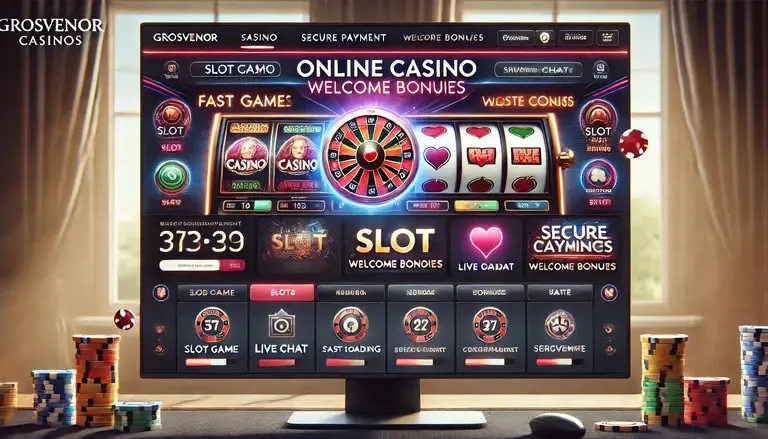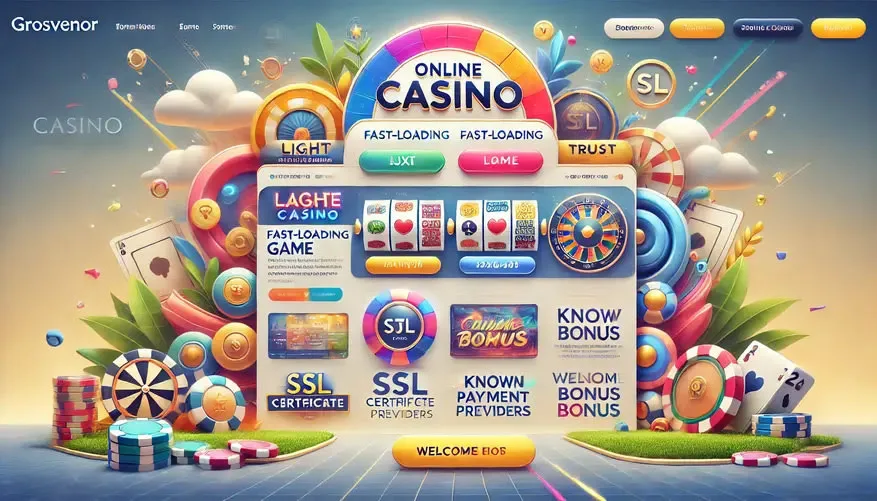
How to Reduce Bounce Rate on a Casino Website
Online casinos operate in a highly competitive space, where player attention is a precious commodity. Retaining visitors and converting them into active players can be the difference between success and stagnation. One of the key metrics signalling whether a site is effectively engaging its users is the bounce rate — and when this figure is too high, it’s time to dig deeper into the causes and implement smart solutions.
This guide explores practical strategies for reducing the bounce rate on your casino platform. Whether you’re working with a brand like Grosvenor casinos or running your own site, the ideas here are applicable across the iGaming industry. From technical tweaks to content creation and design improvements, everything plays a role in keeping players engaged.
What Is Bounce Rate and Why It Matters for Online Casinos
Bounce rate represents the percentage of visitors who land on your site and leave without interacting further — no clicks, no registrations, no gameplay. For casino sites, this can be a sign that players didn’t find what they expected or weren’t convinced to stay. A high bounce rate means lost opportunities and a potential mismatch between marketing promises and on-site experience.
In the online gambling world, trust and engagement are vital. If users are bouncing, that likely points to friction points in design, performance, or relevance. Even a respected brand like casino Grosvenor needs to consistently monitor this metric to ensure users are welcomed with clarity, speed, and value.
Common Reasons for High Bounce Rates on Casino Sites
Poor loading times are a classic reason users abandon websites. For online casinos, where the competition is just a click away, even a two-second delay can result in player loss. If the homepage or landing page doesn’t load instantly, visitors will leave without waiting — especially on mobile devices.
Misleading advertisements can also contribute to high bounce rates. If a user clicks an ad expecting a specific slot or bonus and lands on a generic page, they may feel deceived. Brands like Grosvenor casinos mitigate this by aligning their paid ads with precise landing pages, delivering exactly what was promised.
Unclear navigation is another barrier. Casino players expect fast access to games, promotions, and account actions. If they arrive and have to hunt for login buttons, game lobbies, or bonus information, they’re more likely to close the tab and try another platform — perhaps casino Grosvenor or a competitor with better UX.
A lack of localisation or personalisation can make visitors feel unwelcome. UK-based users, for example, expect content that reflects their preferences, currency, and familiar games. A generic site with no targeted content or cultural alignment pushes users away quickly.
Finally, outdated or unresponsive design can immediately break trust. Players who arrive on a site that looks like it hasn’t been updated in years, or doesn’t adapt well to mobile screens, will assume the platform is unsafe or untrustworthy. In gambling, visual credibility counts for a lot.
Improving the First Screen: Design, Speed and Trust
The first screen — what a user sees before scrolling — is your digital handshake. It needs to load fast, look modern, and establish immediate trust. Featuring recognisable certifications, payment methods, or endorsements from known brands like Grosvenor casinos adds credibility instantly.
Design should prioritise clarity: concise CTAs (like “Join Now” or “Play Blackjack”), minimal clutter, and intuitive layout. Avoid banner overload or aggressive popups, especially on mobile. A clean, user-focused top section reduces cognitive load and encourages users to explore further instead of bouncing.
Technical performance also plays a big role. Use compression, CDN services, and modern caching strategies to ensure your site opens in under 3 seconds. Regularly test your homepage and core landing pages across devices and browsers to catch delays before they hurt retention.
Optimising the Casino Site’s User Journey (UX)
Good UX in online casinos means fewer obstacles and more clarity. A user should be able to land on your site, understand what it offers, and begin their desired action within a few seconds. Logical menu structures and prominent game categories reduce frustration and boost conversions.
Make the sign-up and login process as smooth as possible. Progressive registration, where only the essential fields appear upfront, has been shown to reduce friction and drop-off. Once logged in, personal dashboards or saved preferences can create a more immersive experience, encouraging return visits.
Don’t underestimate the power of micro-interactions. Hover animations, quick previews, and instant game loading contribute to a sense of quality and responsiveness. When executed well, they subtly guide users deeper into your content — and away from that back button.
Content as the Key to Retention: What Works in Gambling
Informative and engaging content is a proven tool for holding users’ attention. Detailed slot reviews, gameplay guides, and promotion breakdowns not only provide value but keep players on-site longer. A knowledge-rich blog or FAQ section establishes authority and helps with SEO simultaneously.
Highlighting exclusive bonuses or loyalty rewards on your landing pages gives players a reason to explore further. Brands like casino Grosvenor often push tailored welcome offers or seasonal campaigns — and ensure these are visible without scrolling or clicking through multiple pages.
Video content is especially powerful. Demos of popular slots, tutorials on game mechanics, or quick intros to new features can significantly reduce uncertainty and make players feel more confident in trying something new. It also lengthens dwell time, improving your site’s behavioural metrics.
Technical Methods: A/B Testing, Clickmaps and Analytics
Effective optimisation is never guesswork. Use A/B testing to compare different headlines, button placements or colour schemes. Tools like Google Optimize or VWO can help you systematically find what keeps players engaged and what turns them off.
Clickmaps reveal user behaviour in visual form. They show where users actually click, where they hesitate, and what they ignore. This data is invaluable for improving layouts, understanding attention zones, and boosting interactions — especially on pages that promote key features or games.
Finally, dive into Google Analytics or other behaviour-tracking tools to spot trends. Are mobile users bouncing more than desktop? Do players exit quickly after hitting certain pages? Understanding this data helps you make informed changes instead of relying on gut feeling.

Integrating Feedback and Live Chat
Players want to feel heard. Including a feedback widget or survey pop-up after a session allows users to express concerns — and gives you actionable insights. Don’t ignore this channel; it’s often the fastest route to uncovering site weaknesses that metrics alone can’t reveal.
Live chat, particularly when staffed in real time, enhances trust and convenience. Whether it’s a new user asking about a welcome bonus or a loyal player needing account support, instant assistance reduces friction and builds loyalty. Many platforms, including Grosvenor casinos, integrate 24/7 support as a key part of their UX strategy.
Post-Optimisation: Monitor and Iterate
After implementing changes, it’s crucial to monitor performance. Don’t just look at bounce rate — track session duration, click-throughs, and page depth. Improvements should reflect in more engaged users, not just fewer bounces. Set benchmarks and revisit them weekly to assess impact.
Remember that optimisation is a cycle. Player preferences shift, device usage evolves, and design trends move forward. Regular audits, fresh content, and continuous testing ensure that your site — whether it’s an independent platform or associated with casino Grosvenor — remains competitive and player-centric.
